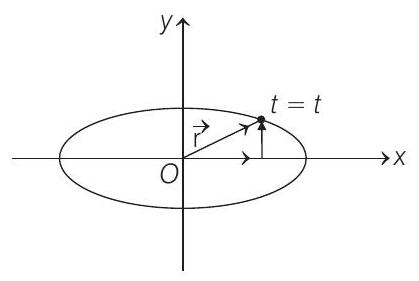Kinematics 6 Question 8
8. The coordinates of a particle moving in a plane are given by
(1999, 3M)
(a) the path of the particle is an ellipse
(b) the velocity and acceleration of the particle are normal to each other at
(c) the acceleration of the particle is always directed towards a focus
(d) the distance travelled by the particle in time interval
Numerical Value
Show Answer
Answer:
Correct Answer: 8.
Solution:
Squaring and adding Eqs. (i) and (ii), we get
Therefore, path of the particle is an ellipse. Hence, option (a) is correct.
From the given equations, we can find

and
At time
only
or we can say that velocity is along negative

Hence, at
At
and acceleration of the particle is
Therefore, acceleration of the particle is always directed towards origin.
Hence, option (c) is also correct.
At
particle is at
Hence, option (d) is wrong.






